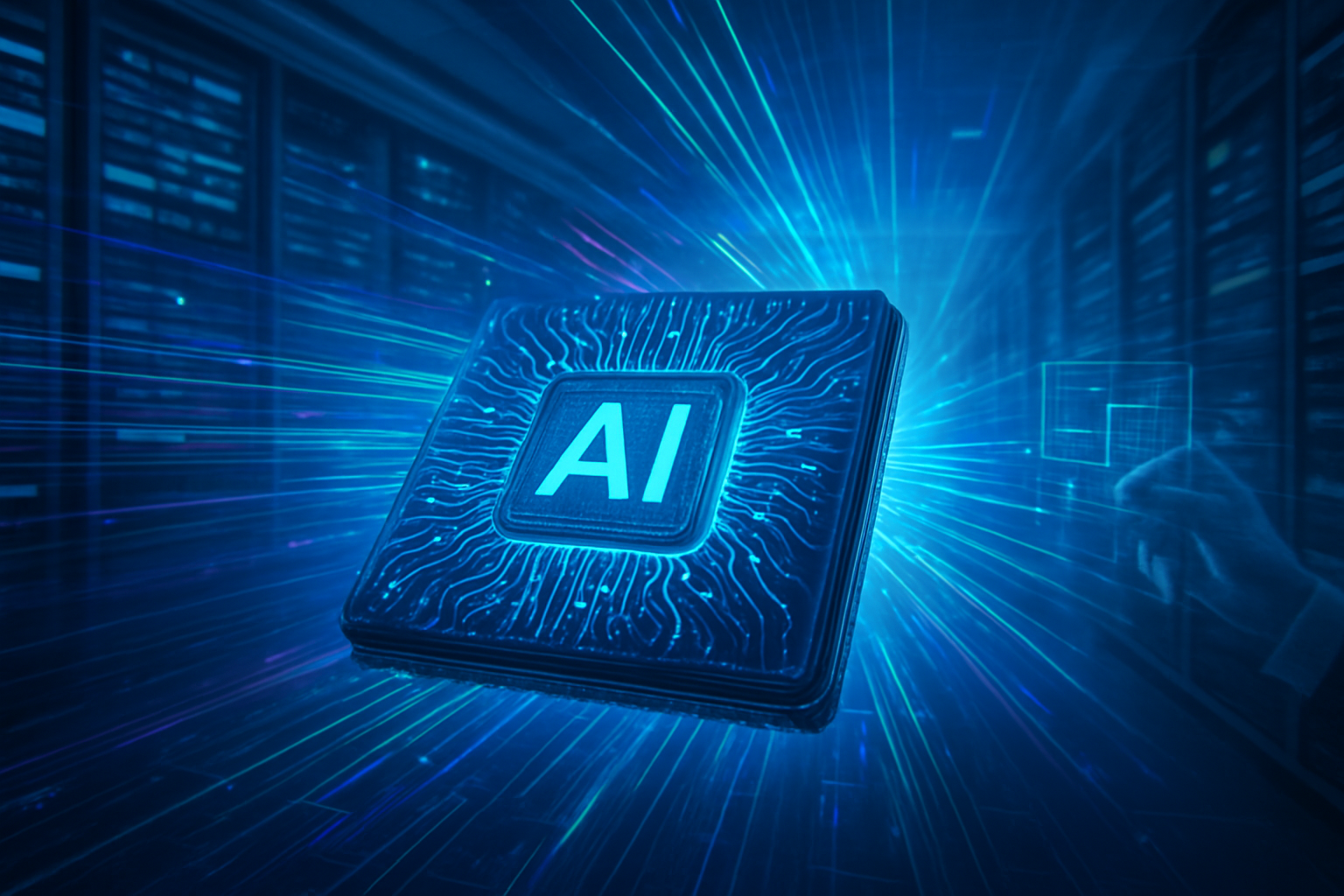Hsinchu, Taiwan – November 20, 2025 – Taiwan Semiconductor Manufacturing Company (TSMC) (NYSE: TSM), the world's leading contract chipmaker, finds itself embroiled in a high-stakes investigation following the suspected leak of its most advanced manufacturing secrets. The alleged breach centers on highly coveted 2-nanometer (2nm), A16, and A14 process technologies, critical for the next generation of high-performance computing and artificial intelligence. This incident has sent ripples through the global semiconductor industry, raising urgent questions about intellectual property protection and the intense competition for technological supremacy.
The allegations primarily target Lo Wei-jen, a former Senior Vice President for Corporate Strategy Development at TSMC, who retired in July 2025 after a distinguished 21-year career with the company. Prosecutors officially launched an investigation on November 19, 2025, into claims that Lo Wei-jen may have taken confidential documents related to these cutting-edge processes, potentially transferring them to Intel (NASDAQ: INTC), a company he reportedly joined in late October 2025. This development comes on the heels of earlier internal suspicions at TSMC and a broader crackdown on industrial espionage in Taiwan's critical semiconductor sector.
Unpacking the Alleged Breach: The Crown Jewels of Chipmaking at Risk
The core of the alleged leak involves TSMC's 2nm, A16, and A14 process technologies, representing the pinnacle of semiconductor manufacturing. The 2nm process, in particular, is a game-changer, promising unprecedented transistor density, power efficiency, and performance gains crucial for powering advanced AI accelerators, high-end mobile processors, and data center infrastructure. These technologies are not merely incremental improvements; they are foundational advancements that dictate the future trajectory of computing power and innovation across industries.
While specific technical specifications of the allegedly leaked information remain under wraps due to the ongoing investigation, the sheer significance of 2nm technology lies in its ability to pack more transistors into a smaller area, enabling more complex and powerful chips with reduced energy consumption. This leap in miniaturization is achieved through novel transistor architectures and advanced lithography techniques, differentiating it significantly from existing 3nm or 4nm processes currently in mass production. The A16 and A14 processes further extend this technological lead, indicating TSMC's roadmap for continued dominance. Initial reactions from the AI research community and industry experts, though cautious due to the lack of confirmed details, underscore the potential competitive advantage such information could confer. The consensus is that any insight into these proprietary processes could shave years off development cycles for competitors, particularly in the race to develop more powerful and efficient AI hardware.
This incident differs markedly from typical employee departures, where knowledge transfer is often limited to general strategic insights. The allegations suggest a systematic attempt to extract detailed technical documentation, reportedly involving requests for comprehensive briefings on advanced technologies prior to retirement and the physical removal of a significant volume of data. This level of alleged misconduct points to a calculated effort to compromise TSMC's technological lead, rather than an incidental transfer of general expertise.
Competitive Whirlwind: Reshaping the Semiconductor Landscape
The potential leak of TSMC's 2nm, A16, and A14 process technologies carries profound implications for AI companies, tech giants, and startups alike. If the allegations prove true, Intel (NASDAQ: INTC), the company Lo Wei-jen allegedly joined, stands to potentially benefit from this development. Access to TSMC's advanced process know-how could significantly accelerate Intel's efforts to catch up in the foundry space and bolster its own manufacturing capabilities, particularly as it aims to reclaim its leadership in chip technology and become a major contract chipmaker. This could directly impact its ability to produce competitive AI chips and high-performance CPUs.
The competitive implications for major AI labs and tech companies are immense. Companies like NVIDIA (NASDAQ: NVDA), Apple (NASDAQ: AAPL), and Qualcomm (QCOM), which rely heavily on TSMC's cutting-edge manufacturing for their AI accelerators and mobile processors, could face a more diversified and potentially more competitive foundry landscape in the long run. While TSMC's immediate market position as the dominant advanced foundry remains strong, any erosion of its unique technological advantage could lead to increased pressure on pricing and lead times. For startups in the AI hardware space, a more competitive foundry market could offer more options, but also introduces uncertainty regarding the future availability and pricing of the most advanced nodes.
Potential disruption to existing products or services could manifest if competitors leverage the leaked information to rapidly close the technology gap, forcing TSMC's customers to reassess their supply chain strategies. This scenario could lead to a reshuffling of orders and a more fragmented market for advanced chip manufacturing. TSMC's strategic advantage has long been its unparalleled process technology leadership. A successful breach of these core secrets could undermine that advantage, impacting its market positioning and potentially altering the competitive dynamics between pure-play foundries and integrated device manufacturers (IDMs).
Broader Ramifications: A Wake-Up Call for IP Protection
This alleged leak fits into a broader, escalating trend of industrial espionage and intellectual property theft within the global technology sector, particularly concerning critical national technologies like semiconductors. Taiwan, a global leader in chip manufacturing, has been increasingly vigilant against such threats, especially given the geopolitical significance of its semiconductor industry. The incident underscores the immense value placed on advanced chipmaking know-how and the lengths to which competitors or state-backed actors might go to acquire it.
The impacts extend beyond mere corporate competition. Such leaks raise significant concerns about supply chain security and national economic resilience. If core technologies of a critical industry leader like TSMC can be compromised, it could have cascading effects on global technology supply chains, impacting everything from consumer electronics to defense systems. This incident also draws comparisons to previous AI milestones and breakthroughs where proprietary algorithms or architectural designs were fiercely protected, highlighting that the battle for technological supremacy is fought not just in research labs but also in the realm of corporate espionage.
Potential concerns include the long-term erosion of trust within the industry, increased costs for security measures, and a more protectionist stance from technology-leading nations. The incident serves as a stark reminder that as AI and other advanced technologies become more central to economic and national security, the safeguarding of the underlying intellectual property becomes paramount.
The Road Ahead: Navigating Uncertainty and Bolstering Defenses
In the near-term, the focus will be on the ongoing investigation by Taiwanese prosecutors. The outcome of this probe, including any indictments and potential legal ramifications for Lo Wei-jen and others involved, will be closely watched. TSMC is expected to double down on its internal security protocols and intellectual property protection measures, potentially implementing even stricter access controls, monitoring systems, and employee agreements. The company's "zero-tolerance policy" for IP violations will likely be reinforced with more robust enforcement mechanisms.
Long-term developments could see a re-evaluation of industry practices regarding employee mobility, particularly for senior executives with access to highly sensitive information. There might be increased calls for stricter non-compete clauses and extended cooling-off periods for individuals transitioning between rival companies, especially across national borders. Potential applications and use cases on the horizon for TSMC include further advancements in 2nm and beyond, catering to the ever-increasing demands of AI and high-performance computing. However, challenges that need to be addressed include maintaining talent while preventing knowledge transfer, balancing innovation with security, and navigating a complex geopolitical landscape where technological leadership is a strategic asset.
Experts predict that this incident will serve as a significant catalyst for the entire semiconductor industry to review and strengthen its IP protection strategies. It's also likely to intensify the global competition for top engineering talent, as companies seek to innovate internally while simultaneously safeguarding their existing technological advantages.
A Critical Juncture for Semiconductor Security
The suspected leak of TSMC's core technical secrets marks a critical juncture in the ongoing battle for technological supremacy in the semiconductor industry. The allegations against former executive Lo Wei-jen, involving the company's most advanced 2nm, A16, and A14 process technologies, underscore the immense value of intellectual property in today's high-tech landscape. The incident highlights not only the internal vulnerabilities faced by even the most secure companies but also the broader implications for national security and global supply chains.
The significance of this development in AI history cannot be overstated. As AI applications become more sophisticated, they demand increasingly powerful and efficient underlying hardware. Any compromise of the foundational manufacturing processes that enable such hardware could have far-reaching consequences, potentially altering competitive dynamics, delaying technological progress, and impacting the availability of cutting-edge AI solutions.
What to watch for in the coming weeks and months includes the progress of the judicial investigation, any official statements from TSMC or Intel, and the industry's response in terms of tightening security measures. This event serves as a potent reminder that in the race for AI dominance, the protection of intellectual property is as crucial as the innovation itself.
This content is intended for informational purposes only and represents analysis of current AI developments.
TokenRing AI delivers enterprise-grade solutions for multi-agent AI workflow orchestration, AI-powered development tools, and seamless remote collaboration platforms.
For more information, visit https://www.tokenring.ai/.








